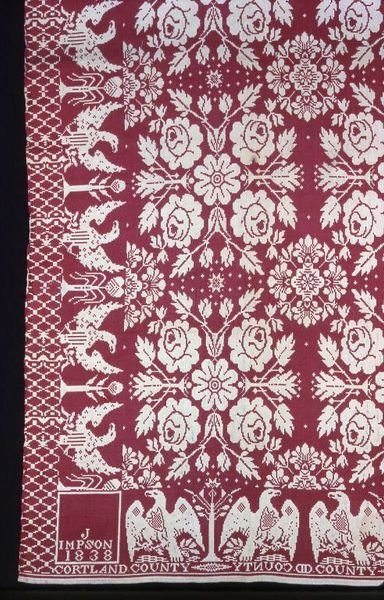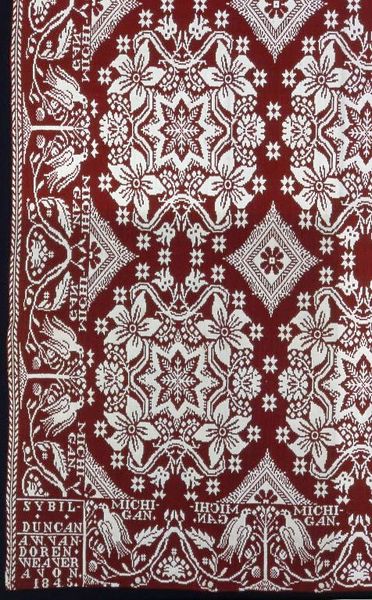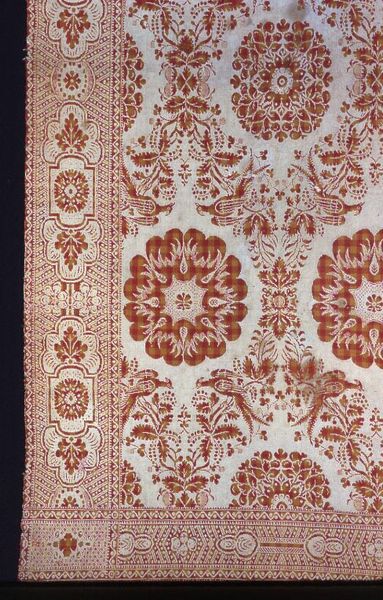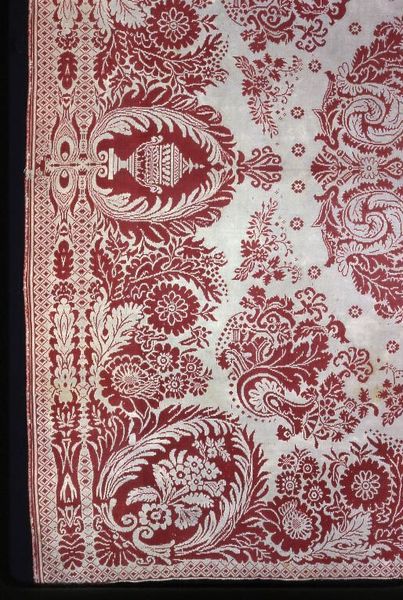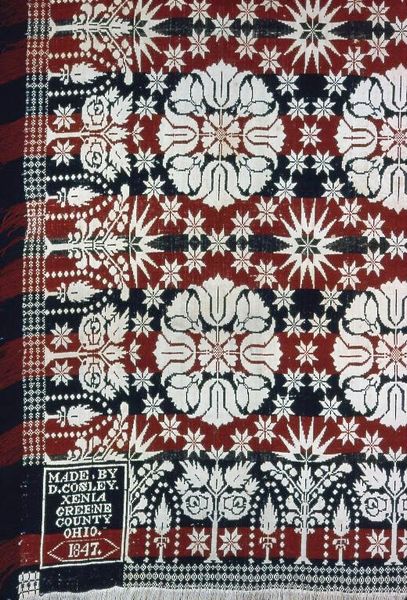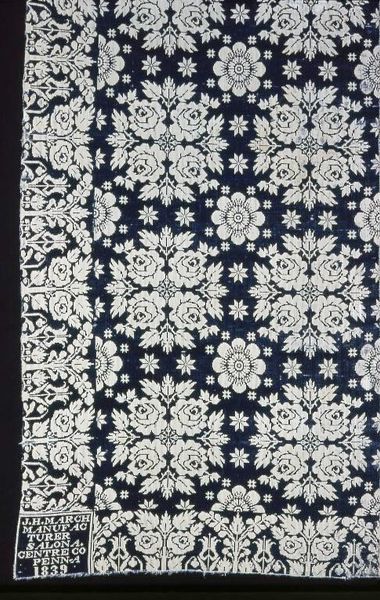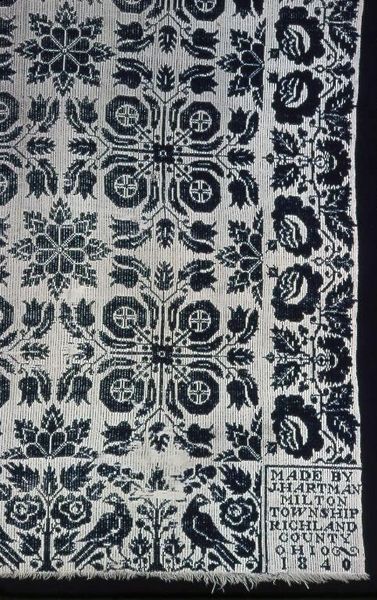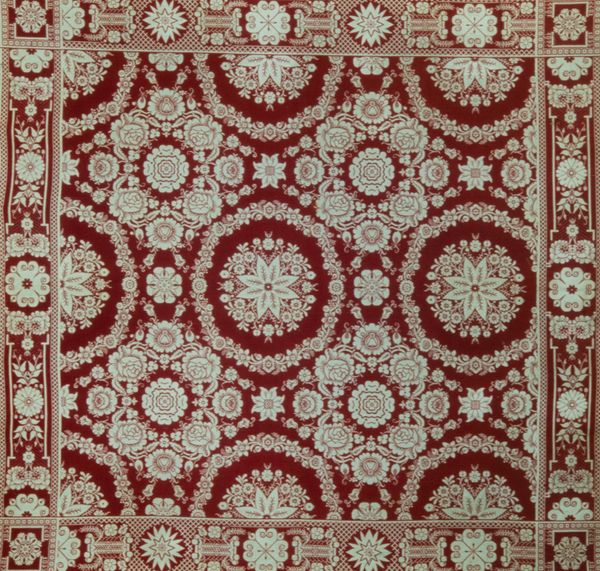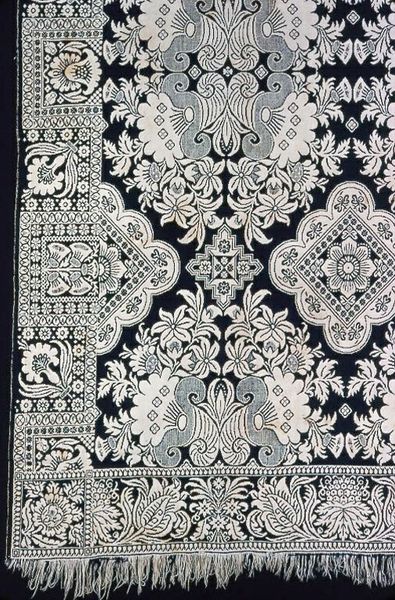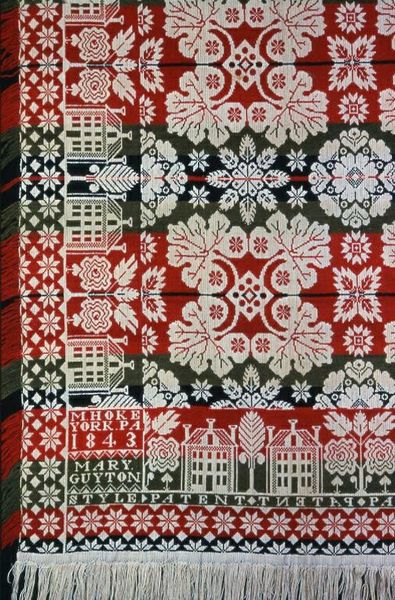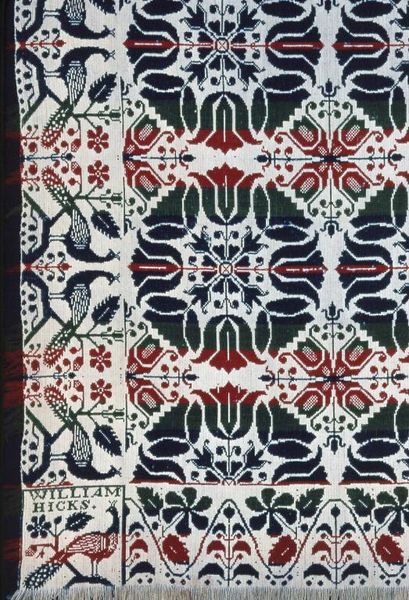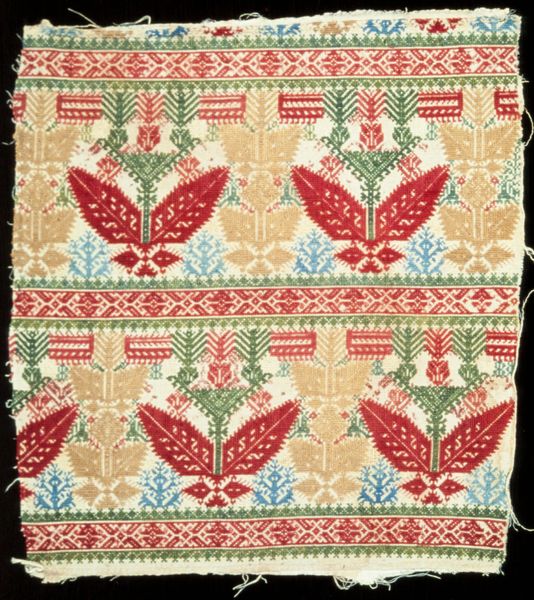
weaving, textile
#
folk-art
#
weaving
#
textile
#
geometric pattern
#
folk-art
#
geometric
#
decorative-art
Dimensions: 228.2 × 178 cm (89 3/4 × 70 in.) Repeat: 56 × 59.25 cm (22 1/8 × 23 3/8 in.)
Copyright: Public Domain
Curator: Here we have a coverlet, dated 1847, created by weaver J. Cunningham of Oneida County, New York. Editor: It has a strong visual impact; the contrast of red and white grabs you instantly. I notice a series of concentric geometric patterns and representational images… it's quite busy, even overwhelming. Curator: The patterns certainly provide visual interest, don't they? Consider how the interplay of the geometric motifs, like the stars, contrasts with the eagles, floral elements, and equestrian figure of Washington. Semiotically, one could interpret the stars, Washington figure, and eagle motifs, combined with the date, to imbue the coverlet with nationalistic ideals. Editor: Indeed, and those eagles aren’t just decoration. Placed alongside the inscription "United we stand, divided we fall", it’s clearly making a political statement. In 1847, the debate over slavery was really intensifying; it was a precarious moment in American history, reflected here. I find it fascinating how everyday objects like this become canvases for expressing political beliefs. Curator: The choice of textile as a medium also contributes to its meaning. Weaving is often associated with domesticity, yet this coverlet transcends mere utility, aspiring toward aesthetic and communicative aims. There’s also a conceptual push and pull here between handmade craft and aspirations for high art. Editor: The integration of the artisan’s name and location into the design is rather telling. In an era where industrialization threatened traditional crafts, Cunningham seems intent on claiming authorship and emphasizing the local origin of his creation, while also placing the artwork in an interesting dialogue with notions of production. Curator: Looking at the textile from the perspective of decorative art opens a new avenue for exploring structure. The limited color palette creates a visually dynamic and harmonious product that transforms simple materials into an art object of significant aesthetic merit. The use of mirroring in the larger forms makes you question the artist’s intention regarding balance. Editor: In a sense, the coverlet presents us with a snapshot of the American social landscape at mid-century. It highlights themes of nationalism, craftsmanship, political unrest, and the burgeoning industrial era, all woven together. Curator: Considering the textile’s artistic merits, the convergence of its thematic qualities leads to a singular vision, offering an invaluable resource for decoding American aesthetic values. Editor: For me, it is that intricate combination of the personal and the political, immortalized through such meticulous craft, that makes this object so moving and historically significant.
Comments
No comments
Be the first to comment and join the conversation on the ultimate creative platform.
